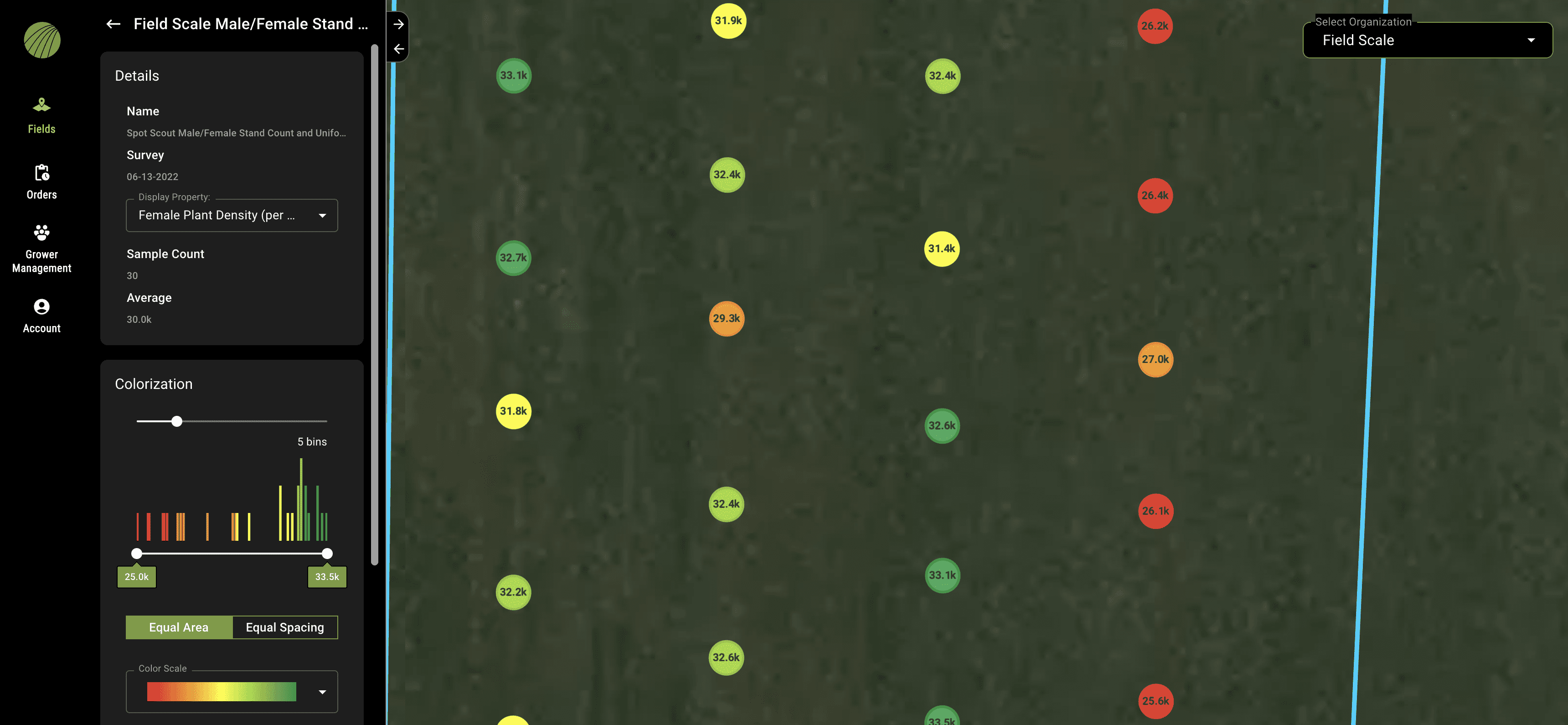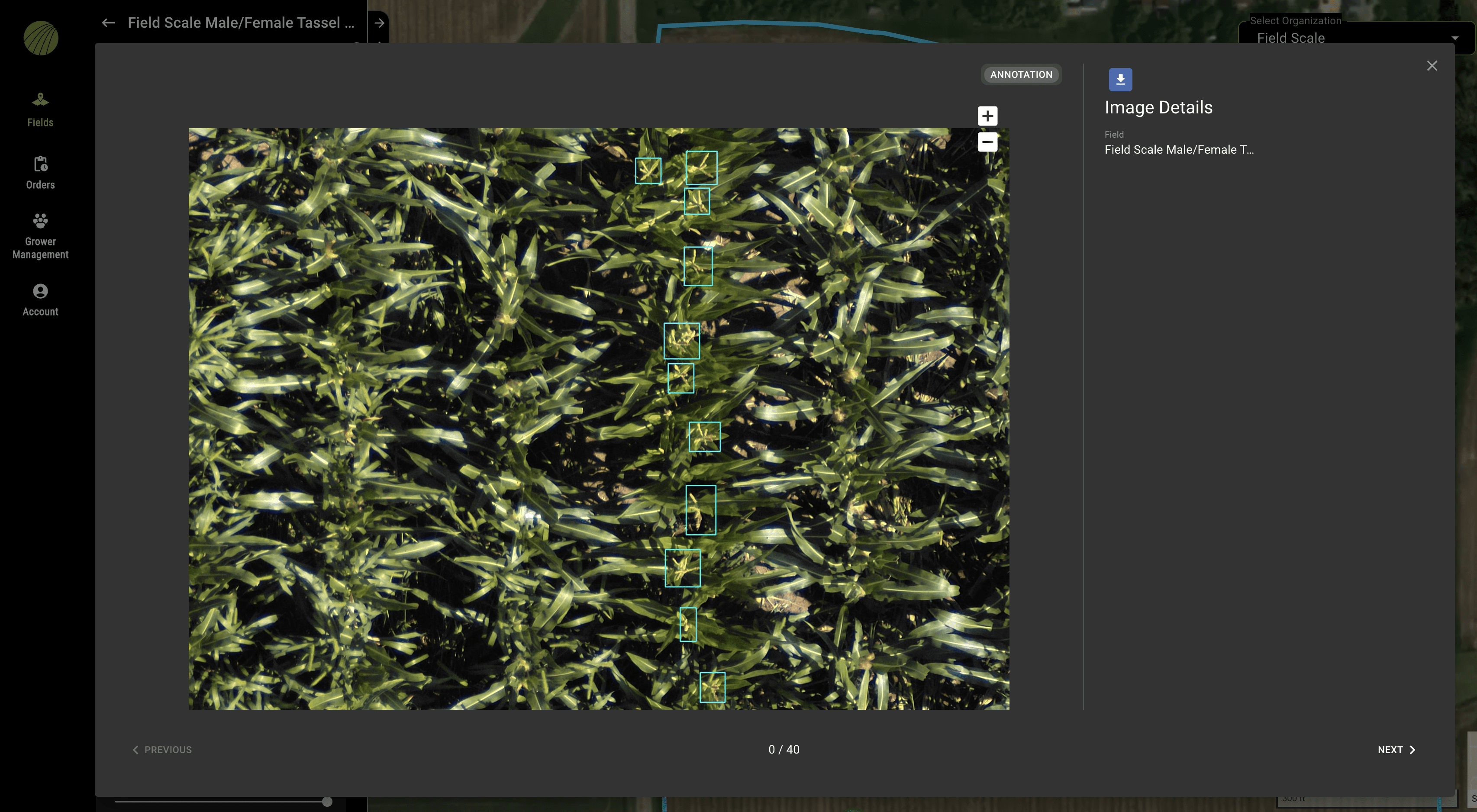In seed production operations and research, data plays a vital role in ensuring higher productivity and successful innovations. Leveraging these data analytics throughout the season helps validate in-field performance and assists in making faster decisions.
Case in point: drone-based stand counts enable seed producers to capture hundreds of times more data points than traditional scouting methods. The speed at which this data can be collected across the entire field increases the likelihood of detecting potential problem areas. Traditional manual stand counts sometimes do not provide statistically meaningful information across the whole field due to limited sample locations. The drastically increased number of sample points associated with using drone-based stand counts make this early indication of plant population highly meaningful for estimating yield potential and making targeted replant decisions.
Beyond this example, drones have provided the opportunity to standardize data collection and provide more accurate and reliable data. From verifying data like purity to leveraging data to optimize production efficiency, these analytics provide a variety of values in hybrid corn seed production. In this blog post, learn about the best drone-based analytics for seed production forecasting, which includes:
- Male/Female Stand Count
- Crop Area
- Male/Female Tassel Count
- Crop Health
- Field Uniformity
Early Hybrid Corn Seed Production Forecast with Male/Female Stand Count
The early months are vital in understanding the year’s seed production forecast. These early stages of plant growth hold valuable insights into how the rest of the year will play out while fueling early decisions to ensure optimal outcomes. Emergence is the first indication of plant growth, performance, and yield potential, so measuring it is critical.

With Sentera’s patented technology for Male/Female Stand Count and Uniformity, get the best of both worlds: measurements of stand count and uniformity, or variability within emergence and planting data. This data set also includes essential metrics related to male and female planted rows– which are both crucial in successful hybrid corn seed production. This serves a unique purpose for hybrid corn seed production by expanding on the standard emergence data typically seen to population counts, skips, and gaps for male and female plants.
Early detection of deviations in emergence or uniformity can provide the first indication of poor performance; if there are factors that can be detrimental to outcomes, quicker decisions can be made to protect productivity. Variability and evenness of plant size and development provides immense value in managing pollination windows and planning decisions around pollination. During these early stages, it is also vital that there is an accurate count of male and female plants to ensure there’s an optimal mix for fertilization and production.
With such a short window into optimal fertilization periods, relying on efficient and precise data can better inform early forecasting decisions. Male/Female Stand Count allows for these timely decisions around replant or input application to be made faster and more accurately.
Male/Female Tassel Counts Role in Hitting the Pollination Window
With this short window of fertilization periods, leveraging every available tool is vital for optimal preparation. Male/Female Tassel Count is one of these valuable tools that provides insight into detasseling operations. Around mid-season once tassels begin developing, leveraging drone-based Tassel Count analytics provides timely data capture needed to analyze and make quick decisions to ensure successful pollination and maximize seed productivity potential.

Tassel inspection uncovers insights into field purity and assists in directing detasseling priorities and field decisions. With the timeliness of drone systems, detection of areas in need of detasseling or other field decisions allows faster action and guidance when sending out someone to make the necessary changes. Added speed to making in-field adjustments during season provides ample opportunity.
Whether it be areas that need to be detasseled or to inspect the quality of the corn or gauge potential yield, Tassel Count analytics help to meet time guidelines and get a more detailed look into potential productivity. These valuable insights into potential productivity help to ensure you are producing and manufacturing enough seeds to meet the demand.
Honorable Mention: Other Valuable Analytics for Hybrid Corn Seed Production
A vital part of performance is plants’ health, which can easily be monitored throughout the season via boots-on-the-ground, drones, or satellite. Drones and sensors provide the necessary precision and efficiency needed to accurately measure and monitor a plant’s health. Crop Health analytics uncover deeper insights into plant performance and health throughout the season while assisting in estimating yield potential.
When it comes to harvest readiness, Normalized Difference Vegetation Index (NDVI) can measure the ideal temperature and dryness to determine when your plants are ready for harvest – allowing you to get the most bang for your buck. NDVI imagery can assist in detecting areas of heavy weed pressure in fields prior to harvest, enabling better actions to prepare the field for harvest activities.
At any point in the season, Crop Area can also be extremely useful to understand field boundaries and exclusion zones to effectively map planting areas and inform contracting and forecasting decisions.
Leveraging these data analytics for hybrid corn seed production provide those necessary insights to maximize production and outcomes – helping you to meet production goals and needs.


